Photo: James King
.jpg)
feature
Machinedrum's New Album '3FOR82' Taps Into The Spirit Of His Younger Years
For his 15th album, Machinedrum drew inspiration from his early productions and ventured into the Joshua Tree desert. There, he collaborated with Tinashe, Mick Jenkins, Duckwrth and more, alongside his longtime friend and collaborator Jesse Boykins III.
“If you were able to go back and hang out or collaborate with your younger self, what would you say to them? What advice would you give them?”
That question fueled Machinedrum’s new album, 3FOR82, out May 24.
Unlike most people, the prominent electronic producer, real name Travis Stewart, has a direct line to his younger self through the music he’s made. He still has hard drives with productions from his teenage years, and on his new album, he sought to create with that same spirit. He wanted to hang with his younger self who was nothing but a kid who loved music with big dreams.
“In that early period where everything is just so free, there's nothing like it,” Stewart said. “I think, as creatives, we all try to find different ways to tap back into that.”
By tapping back into that freedom, Stewart made 3FOR82 into a diverse and exciting body of work. On his 41st birthday (the album title 3FOR82 reflects Stewart’s birthday of March 4, 1982), he started exploring his older recordings, collaborating with his younger self. The result is an album that is more than the sum of its parts. Weaving a wide palette of genres together, including alternative hip-hop, drum & bass, and UK garage — along with a long list of collaborators — it has an experimental hunger to it as well.
Stewart worked with more vocal collaborators than on any past album, featuring artists including Tinashe, Mick Jenkins, and Topaz Jones on 11 of the 12 tracks. With this stronger external input, each track has a unique identity. While “HON3Y,” the only solo production, harbors Stewart's talent for erratic sonic motion, “KILL_U” with Tanerélle is a minimalist soul tune.
Clearly, when Stewart was just starting he wanted to make anything and everything. He started releasing music as Machinedrum in 2000. Since then, he has shared 15 albums and launched various aliases including Tstewart, his atmospheric side project, J-E-T-S, the club-focused collaboration with the respected house artist, Jimmy Edgar, and Sepalcure, his duo with Praveen Sharma that focuses on dubstep and UK garage.
After so much experience, he knows the music industry very well. The good parts and the bad.
“Once you've released a few projects, this new pressure comes along with what your fans expect from you,” Stewart said. Conversely, his early recordings offered a window into an era without any pressure or expectations.
Read on to learn more about where he found the biggest inspiration when he took a trip down musical memory lane during the making of 3FOR82.
Impulse Tracker: His First Production Software
Every artist has to start somewhere, and Machinedrum started with Impulse Tracker, the music production software released in 1995. Stewart is now using industry-standard programs like Abelton, but when he was using Impulse Tracker during his early days, his music was imbued with a kind of youthful optimism that only comes when you’re starting something new.
"For me it was going into these old Impulse Tracker sessions and finding these little nuggets of ideas that I didn't really know what to do with at the time."
When he was working in Impulse Tracker, he only had the skills to make cursory musical ideas, but when he listened back he was really proud of those ideas. “I was just so excited about music. Not to say that I'm not now, but when I listen to electronic music now, I can't help but think about how it was made. Think about what kind of numbers they're doing. Who produced it? What label released it?” Stewart said. “Whereas back then, I would listen to things for the pure sake of listening to them and just be so inspired.”
Finding Freedom In Rules
Stewart often suffers from what he likes to call “choice paralysis.” If there are too many options it can be difficult for him to make a decision. Well, music production presents endless choices. How much reverb to use? Whether or not to use samples? What plugins will make this track sound its best? So, when he was making 3FOR82 he laid down specific parameters to limit his choices.
First, he was only allowed to use sounds that he drew from his Impulse Tracker recordings. He spent a month going through the old pieces of music and created a sound library from them. Those sounds became the album. “That whole process of creating the sound library was incredibly inspiring. Being a digital archaeologist,” Stewart said.
He had two rules if he wanted to sample something outside those old files. One, he had to run the sound through Impulse Tracker so it maintained the same aesthetic. Two, he had to sample music from his birth year of 1982.
“That was one of the parameters that actually made it a lot of fun to explore what music came out the year of my birth and see what things resonated with me. I was finding a lot of interesting synchronicities of stuff that I didn't realize came out in 1982 that I'm actually a huge fan of,” Stewart said.
The Legacy Of Joshua Tree Continues
Plenty of artists have found musical inspiration in the vast deserts of Joshua Tree National Park. Josh Homme founded The Desert Sessions there back in 1997. RÜFÜS DU SOL recorded their live album, aptly titled Live From Joshua Tree among the desert rocks in 2019. Now Machinedrum has joined the musical legacy of Joshua Tree by making 3FOR82 there as well.
He always had a great time there when he visited with friends and family in the past, but he also found a profound sense of clarity during those trips.
“Ideas come to me. I just feel so separated from the chaos of the world,” Stewart said. “I had always wanted to come to Joshua Tree for the pure reason of doing something creative.”
He set up a mobile studio in an Airbnb and invited myriad guest artists to join him in this temporary creative atmosphere and share in the clarifying experience.
His Dear Friend Jesse Boykins III
Jesse Boykins III is a vocalist who has collaborated with Stewart since the 2000s. He was also a groomsman at Stewart’s wedding. When Stewart was out in Joshua Tree, he spent an hour on the phone with Boykins discussing his idea of revisiting the past to make the album. During that conversation, he realized their long history together could further fuel the creative process.
Stewart made Boykins a co-executive producer, and Boykins brought in numerous vocalists Stewart had never worked with such as Duckwrth and aja monet. Stewart instructed Boykins to find seasoned artists when he was courting collaborators so they could bring their own past into the music.
He asked each of the collaborators the guiding question at the beginning of each session: “If you were able to go back and hang out or collaborate with your younger self, what would you say to them? What advice would you give them?”
Sometimes Stewart sampled their responses and added them to the music like with Mick Jenkins’ track, “WEARY.” Other times, the question was meant to inspire trust between Stewart and the collaborators Boykins introduced to him.
“Just having him there, understanding the concept behind the album, and making sure that we're all keeping within the theme, whether literally, or in more of an abstract way, that was super important,” Stewart said of Boykins. “I'm super grateful for his involvement on the album and all the inspiration he gave me. Being there along my side throughout the process. It's very cool working like that with someone. I had never done that with an album in the past.”
Healing His Inner Child
When Stewart was producing 3FOR82 from songs he made as a teenager it was just as spiritual for him as it was technical. During those early years as an artist, Stewart felt very isolated. There was no community around the music he loved growing up in North Carolina in the 90s. Even when his preferred sounds migrated from the UK to the US, it was in cities like Miami and New York, far away from him. In his loneliness, he struggled to believe his dream of being a professional electronic musician was possible.
Well, over two decades later, Stewart has accomplished his dream and then some. By working with music from his past, he was assuring his younger self that everything was going to be OK. “This whole process of collaborating with my younger self on these new songs was so healing for me. It was like a way of me sending a message to my younger self. ‘You're gonna do all these amazing things. You're going to travel the world. You're gonna work with amazing artists. So keep your chin up. Don't worry so much about the future. Just keep going. Keep doing what you're doing,’” Stewart said.
6 Reasons Why Fred Again.. Was Dance Music's Rookie Of The Year
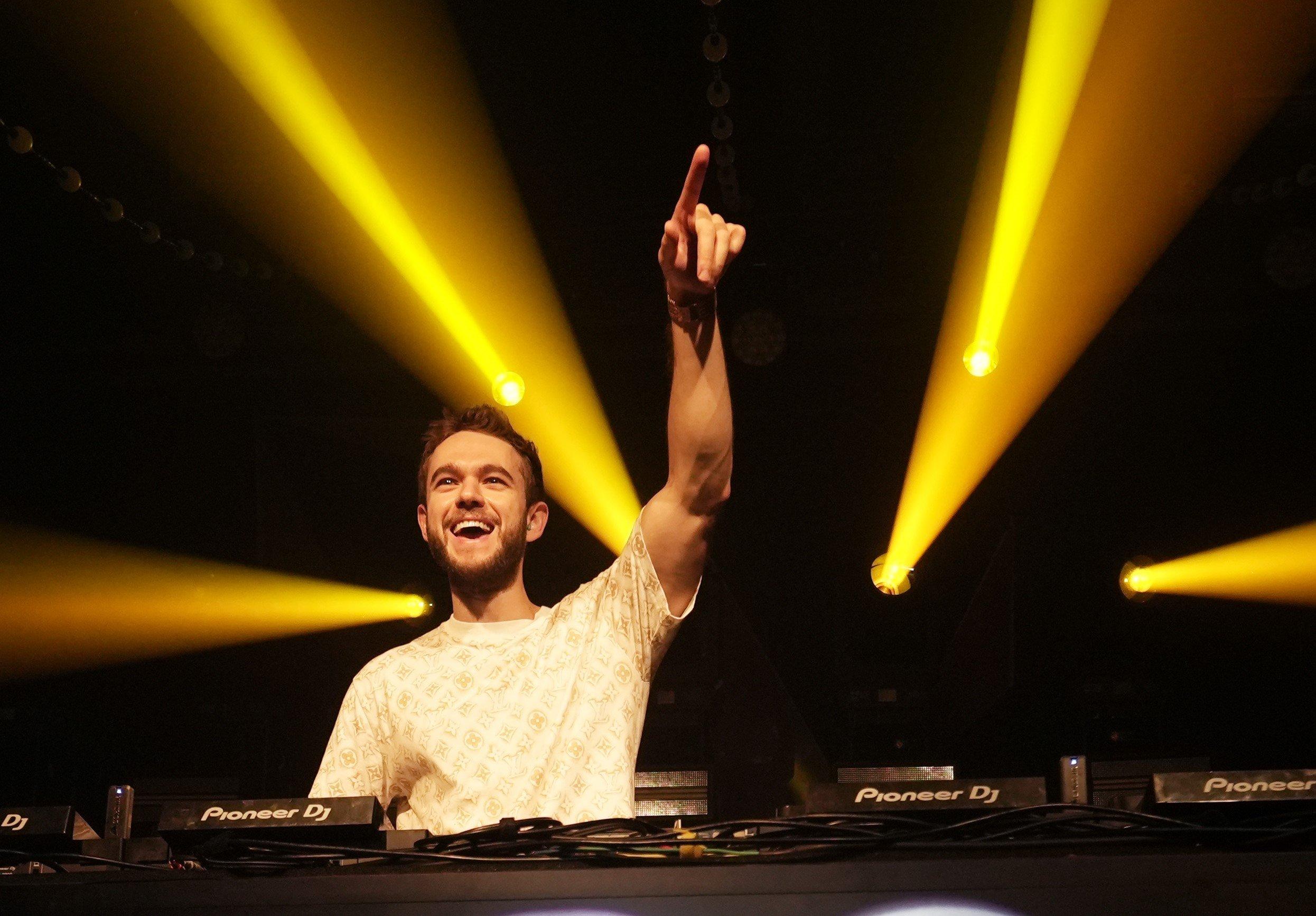
Photo: Ilya S. Savenok/Getty Images for Twitch
feature
Zedd's Road To 'Telos': How Creating For Himself & Disregarding Commercial Appeal Led To An Evolutionary New Album
'Telos' "isn't going to be that pop album that some people may have wanted me to make," Zedd tells GRAMMY.com of his highly anticipated album — his first in nine years.
At the time of our call, the release of Telos — Zedd's first studio album in nearly a decade — is just seven days away. Snug in an earthy brown crewneck, the 34-year-old musician joins the Zoom from his new home in Encino, California, with a degree of poise that some might find surprising at this point in the rollout.
Still, his relaxed body language, decisive, measured speech, and quiet confidence make it clear that any anxiety he once felt about the LP has been replaced by pure anticipation.
"I am honestly just really excited. I think I've released music in the past that I was nervous about, but it's quite different with this album," he tells GRAMMY.com. "I feel very calm and just happy to be able to release this music that I've been working on for so long, some of which has been in the works as late as nine years ago."
Out Aug. 30, Telos arrives about four years later than initially announced and about eight years after it was contractually due. Though Zedd confirmed that the long-awaited answer to his second studio album, True Colors (2015), would arrive in 2020, he indefinitely postponed the project at the height of the COVID-19 pandemic.
"I decided to push back the album to when things are more back to normal," he wrote in a Reddit AMA (ask me anything) in November 2020. "I really wanted it to come out this year, but I put the album on standby because during quarantine, I just didn't feel the inspiration to make this the best album possible."
Timing is everything and Zedd, who counts a clock ticking sample among his stylistic hallmarks, knows this well. Zedd embraced the axiom while making Telos, an album that "isn't for the algorithms" in an era when creative works' cultural capital is largely decided by how well they pander to an algorithm. Telos is decidedly — and in some ways, daringly — non-commercial. "Lucky," alongside singer/songwriter Remi Wolf and "Automatic Yes" with John Mayer, are notably the only two tracks palatable for commercial radio airplay. The 10-track album largely plays like a love letter to classical music (there is an orchestra on the entire LP), with flashes of pop, dance/electronic, jazz, world music, and metal influence. A cross-generational list of collaborators — including 40-year-old musician and composer Jeremy Kittle, who recorded each string for the album one by one, and Gen Z singer-songwriter Bea Miller — further dynamize Telos.
Telos "isn't going to be that pop album that some people may have wanted me to make," Zedd acknowledges. Nor will it be the dance/electronic LP that purists from his name-making run in the early-2010’s might long for. Fans gained during the GRAMMY-winning producer's complextro, electro, and progressive house-heavy era (think "Shave It") have been some of his most outspoken critics in recent years, reproaching his stride into commercial pop.
This response is neither surprising nor foreign to Zedd. "I felt the same way about a lot of bands and artists that I grew up listening to when I heard their new music," he reflects. "In the moment, you might be like, I'm disappointed, 'cause I wanted X, Y, Z, and with a little bit of perspective, you realize what an artist has done, and maybe those become your favorite works when you give it time."
Zedd has already proved his ability to craft pop hits with staying power — with help from some of the genre’s most prominent voices. The 2017 single "Stay" with Alessia Cara (2017) and 2018's "The Middle" with Maren Morris and Grey were two of Zedd's biggest smashes in the dance-pop domain post-True Colors. Both singles achieved platinum certification, though "The Middle" has since struck platinum six times. Like "Clarity" — the 2012 breakthrough single that scored Zedd his sole golden gramophone (for Best Dance Recording) — "Stay" and "The Middle" imbued him with the confidence and greater depth of reference to make an album like Telos.
"If I made another album today that felt the same way Clarity felt back then, you wouldn't feel the same way about Clarity today," Zedd reasons, adding that Telos has some of the "internal motivations" and experimentation of Clarity. "It's just a more mature and experienced expression, so I think the people who loved Clarity will find plenty to love on Telos."
The album's debut single, "Out Of Time" featuring Bea Miller, is likely to serve as one such point of connection. It retains the DNA of Zedd's established, melody-driven sonic identity while still feeling fresh and exploratory.
"It's a really good example of a new version of an old me," he attests. "The real core of what Zedd feels like isn't the sound. It's not the synths, and it's not the kicks you hear at the festival. It's actually really deeply rooted in chord progressions and melodies. Those are well alive, and more than ever, on Telos."
At nine-and-a-half-years-old, "Out Of Time" is the oldest track on the album, penned just after Zedd delivered True Colors (OG fans will recognize the song's chord progression from the intro to his DJ sets). His motivation to repeatedly rework the track and fashion it into the album opener stems, in part, from the feeling that it was "too theatrical" to be a standalone single.
Telos provided "the perfect canvas to deliver all these meaningful songs to my life and to my career that couldn't just be one-offs," he says.
Zedd’s current musical ethos is born from his disenchantment with the direction of music in the age of algorithms and TikTok, and the resulting Telos is the product of his "decision to really be free musically."
"There was one moment in making Telos that made me realize this is like my autobiography. This is everything I am as an artist, and everything I do musically is for me," Zedd says with conviction. "That was a really liberating moment because I am essentially guaranteeing that I'm not going to disappoint anyone because the only audience is me. I'm making this for myself."
"It sounds so silly to even say [this album is just going to be for me] because you would think that everything you make as an artist is for you," he concedes. "But really, the truth is it's hard to block out the feeling that people might be disappointed, and the feeling that you could change a song, and you would make so many people happy."
Telos' exhaustive creation process was as much a matter of deconstruction as it was reconstruction. About halfway through the first version of "Z3," as the album is known colloquially among fans, Zedd scrapped 90 percent of what he'd written, salvaging only "Dream Brother." The hypnotic interpretation of Jeff Buckley's 1994 song embodies the musicality that threads Telos — from the texture of the opening guitar chords and piano, to the swell of strings, and Zedd's signature clock ticking sample in its outro. Telos marks the first and only time the Buckley estate has given an artist the rights to the late creative's work.
"Dream Brother," Zedd explains, was "the only song that felt like this is living very much in the world that I really deeply feel," citing it as "a song that has inspired me since my early days as a musician."
Between his successes on Billboard's Hot Dance/Electronic Songs chart and the coveted Hot 100, it may be easy to forget that Zedd's musicality traces back to childhood. A classically trained musician, Zedd began playing the piano at the age of four and still writes his music on the piano first. Telos is a cerebral reminder that it's reductive to think of Zedd as anything less than a natural-born composer.
Elsewhere, "Sona," featuring the olllam, harkens back to Zedd's days as a member of German metalcore band DIORAMIC in its use of the 7/4 time signature. "Sona" is the first song in this time signature that Zedd has made since his days as a band member (he was the group's drummer from ages 12 to 20).
Still, Telos' unequivocal pièce de resistance is "1685" with GRAMMY-winning English rock band Muse. The six-minute and 11-second album finale takes inspiration from Johann Sebastian Bach's "The Well Tempered Clavier" — the first classical piece Zedd ever learned to play on piano as a child and as he calls it, "probably the most influential piece ever written in life for me."
Named for Bach's birth year, "1685" extends the full-circle nature of Telos. Both a tribute to his favorite composer and a reference to Zedd's earliest days as a musician (he performed a cover of Muse during his very first concert with DIORAMIC), these connections imbue Telos with authenticity and soul.
Intricate and lovingly-crafted, Telos is Zedd at his most musically honest. "It's my entire life in one album," he says. "It's truly an evolution of who I am as a musician."
His decision to eschew trends and commercial formulae to embrace "music for the sake of art" confers a sense of timelessness to Telos. For those versed in gaming terminology (like the multi-platinum producer, a notorious gamer) Telos is Zedd in his final form — a state unlocked only after the successful completion of considerable, skill-building challenges.
Fittingly, the multifaceted nature of Telos and its creator is reflected in the album's title. The Greek word has multiple meanings, including accomplishment, completion of human art, and the end. He chose the name "telos" 30 or so minutes before he had to submit the LP — an ironic timeline for a production that took years to conceive. Yet like all of the creative choices that culminate in Telos, this, too, was part of a thoughtful strategy. Zedd wanted to be sure that the album's title would faithfully capture its concept, even after the LP’s many metamorphoses.
"I really relate to all of the meanings," he says. "Accomplishment of a goal is one of them. I made this album that I was dreaming of making my whole life with the artists I love so much who have inspired me, so it's a genuine dream come true to make this album."
With introspection written on his face, Zedd pauses, then continues: "One of the meanings of 'telos' is the end, and there was a good chunk of time where I thought this might be the last music I will ever release. It's kind of like I put all my emotions and feelings into this one album…is there any reason for me to take space away in this universe if this is all I have left to say? And for a moment towards the tail end, I was like 'yeah, Telos is the name for this album because I will never make another song in my life.'"
But Telos is merely another beginning, briefly disguised as an end. Zedd delivered the album, had a second to breathe, moved from Beverly Hills to Encino, put a piano in his bedroom, and "inevitably started writing new music." Timing is everything.
More Dance & Electronic Music News
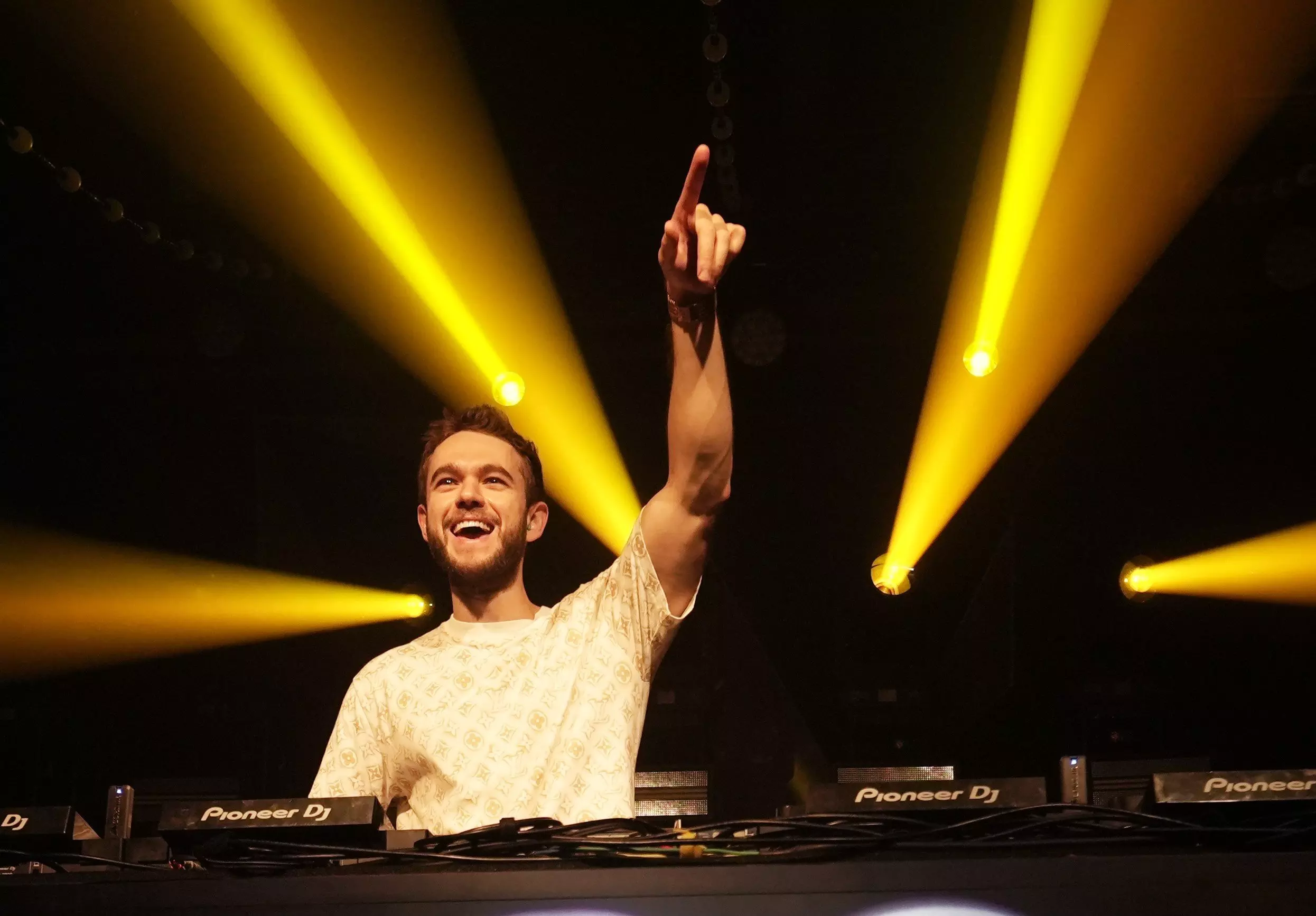
Zedd's Road To 'Telos': How Creating For Himself & Disregarding Commercial Appeal Led To An Evolutionary New Album

10 Cant-Miss Sets At HARD Summer 2024: Disclosure, Boys Noize, INVT & More
.webp)
Machinedrum's New Album '3FOR82' Taps Into The Spirit Of His Younger Years
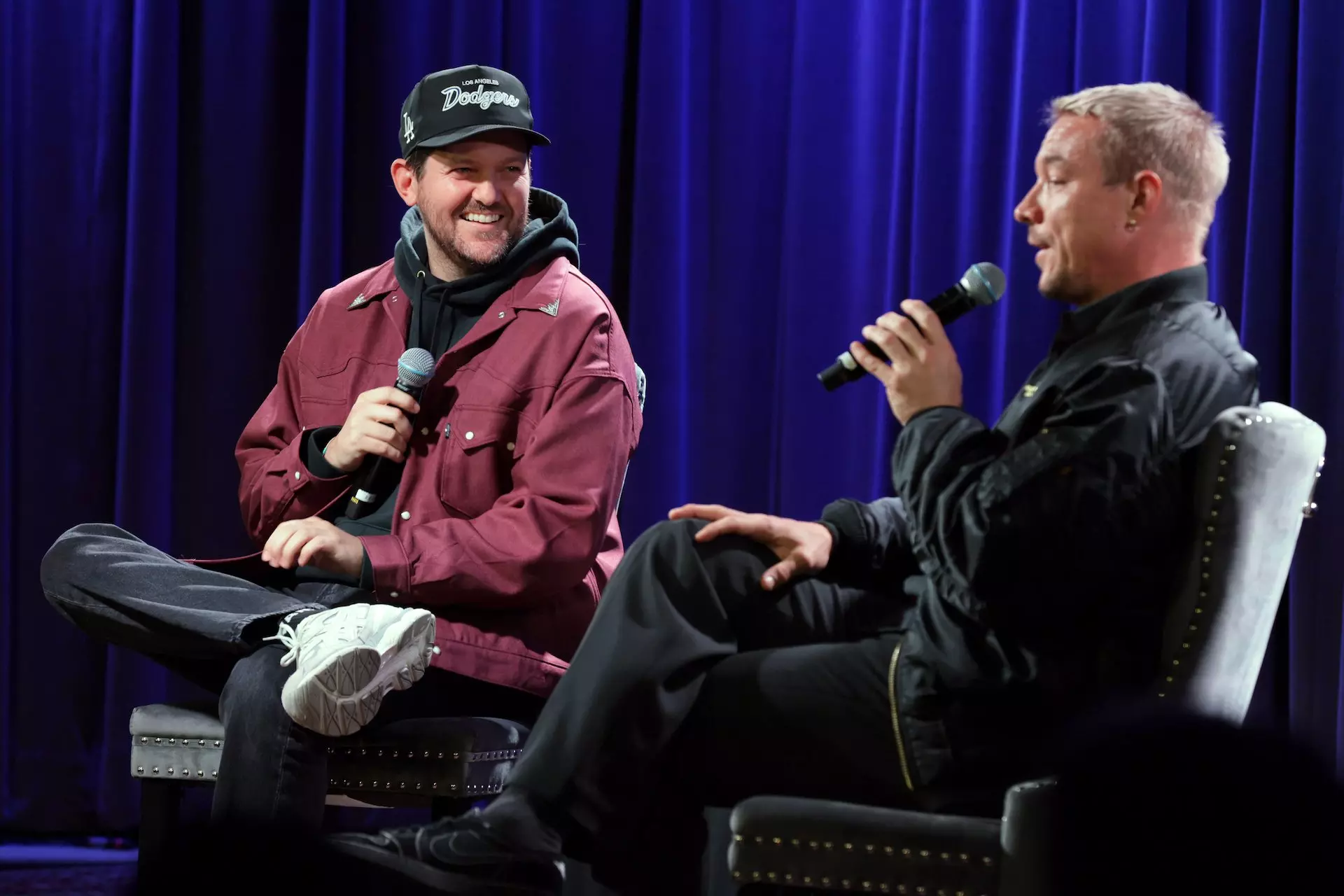
Dillon Francis & Diplo In Conversation: 5 Things We Learned From The GRAMMY Museum Event
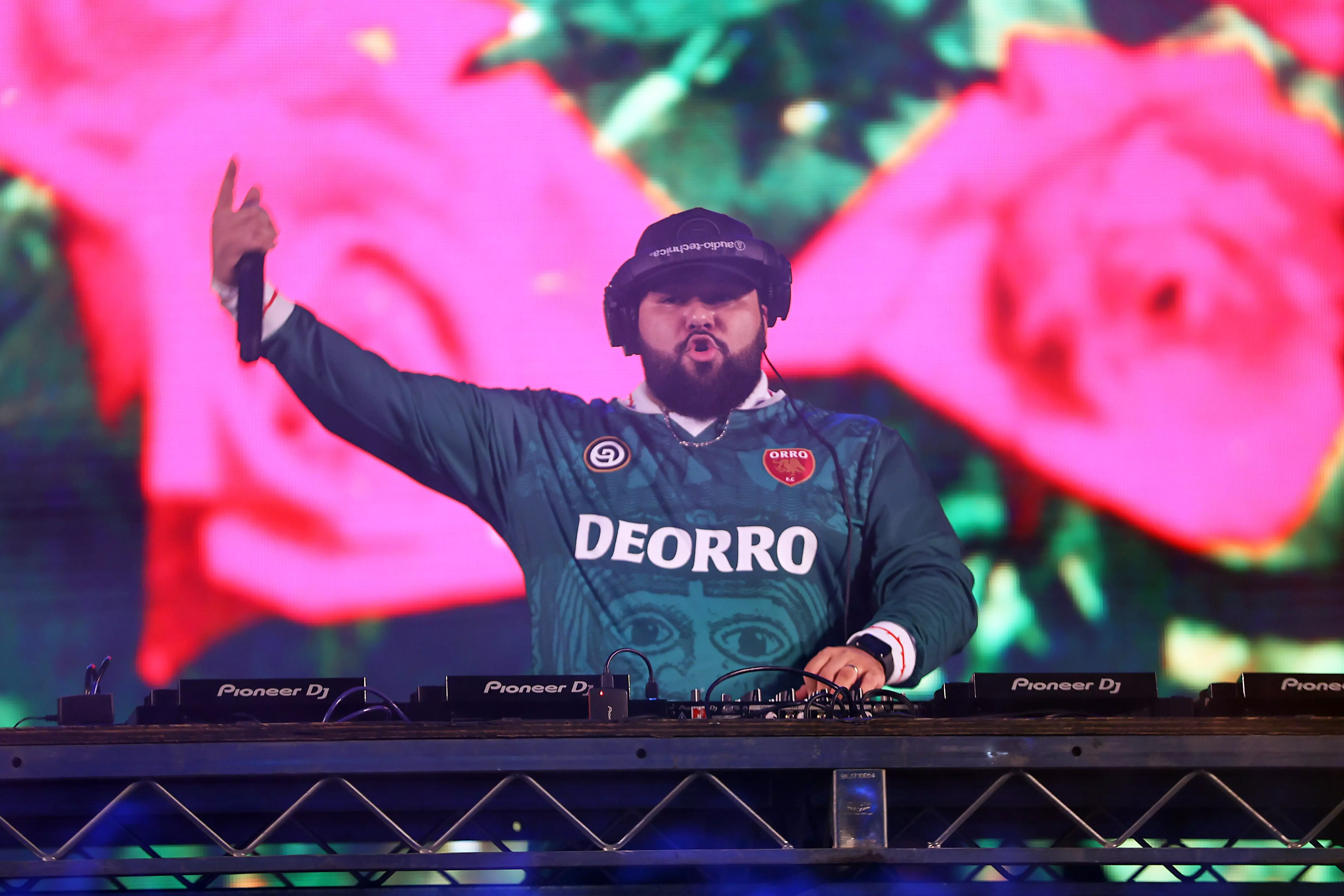
8 Essential Latin Electronic Releases: Songs And Albums From Bizarrap, Arca & More
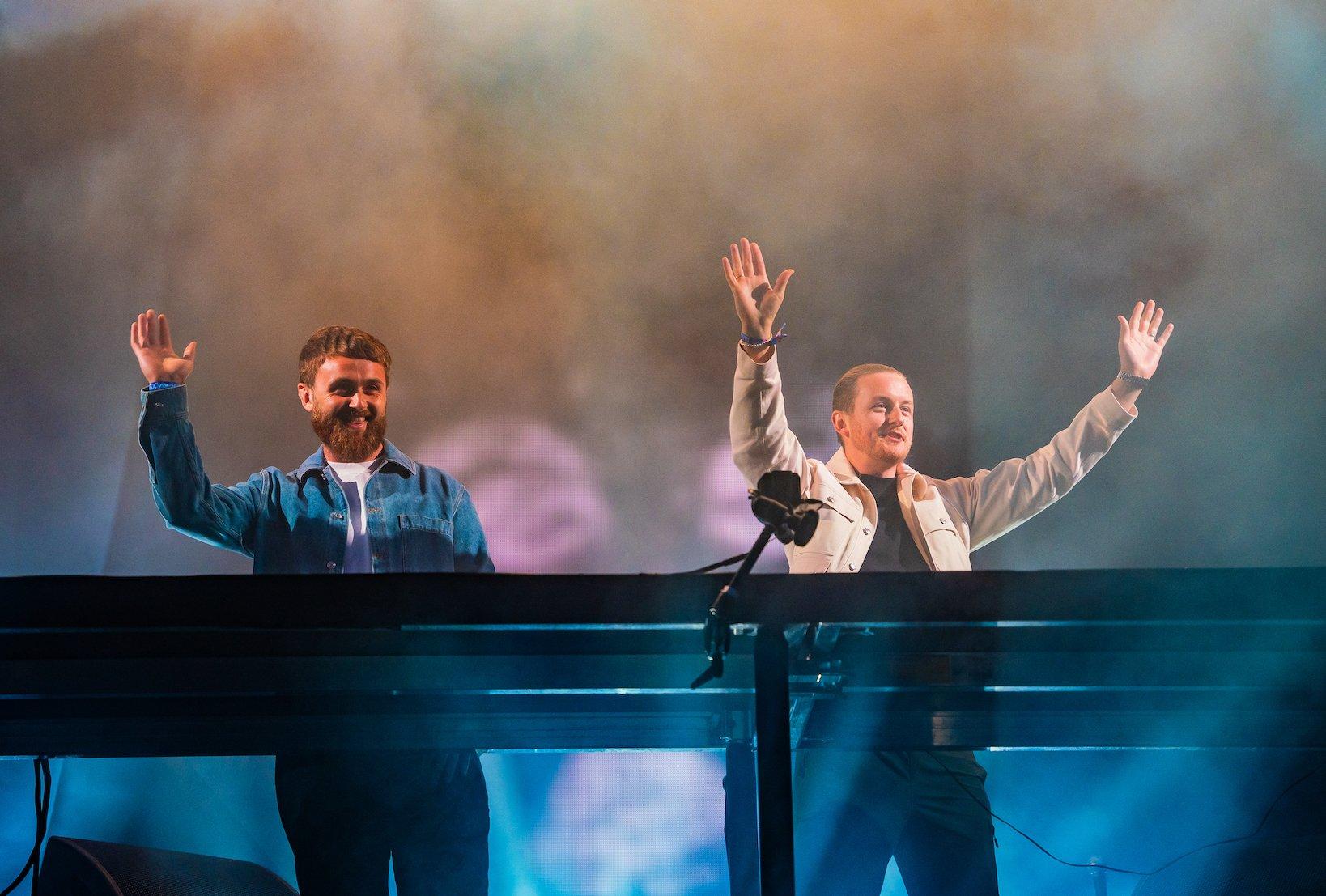
Photo: Venla Shalin/Redferns
news
10 Cant-Miss Sets At HARD Summer 2024: Disclosure, Boys Noize, INVT & More
The L.A. festival is famous for bringing an array of electronic sounds, from dance-pop and experimental techno, to classic house and rare back-to-backs — and this year's lineup features some of the biggest and buzziest acts in dance music.
When it comes to American dance music culture, few events carry the cool cache of a HARD party. Founded on New Year's Eve of 2008 by DJ and former label A&R Gary Richards, the name HARD has become synonymous with taste-making, offering fans an enviable mix of influential headliners and cutting-edge up-and-comers.
HARD parties have been a breakout platform for luminaries like Justice, Skrillex, deadmau5, and more, and the HARD Summer festival is one of the brand's most celebrated flagship events. In 2017, HARD was absorbed into the Insomniac festival family — the same company that brings fan-favorites EDC Las Vegas and Electric Forest to life — which ensures the stage production, on-site activities and other ancillary fun are sure to be supersized. How many festivals do you know that offer a Ferris wheel and a swimming pool?
Coming to Los Angeles' Hollywood Park near SoFi Stadium on Aug. 3 and 4, this year's lineup continues the tradition of blending authoritative artists, legacy DJs and unique back-to-back headliners with buzzy newcomers in a variety of genres and styles.
Whether you wanna rave out with club king Jamie xx, bang your head to bass with Zeds Dead, get tropical with Major Lazer, see what it sounds like for UK grime star Skepta to DJ, or just sing along to mid-2000s belters courtesy of dance-pop crossover queen Nelly Furtado, there's something to please every palette. Of course, in true HARD tradition, we seriously recommend exploring the undercard, because the biggest name in electronic music tomorrow is probably playing one of the HARD side stages today.
While you wrap your head around the stacked lineup, check out a quick guide to 10 must-see acts below.
Boys Noize
A legend on the decks who can play blissful disco or teeth-shattering techno with a smile, Boys Noize is a must-see on any lineup simply because he loves doing the job. He recently teamed with Skrillex on the anthem "Fine Day," and released an entire EP with alt-rap icon Rico Nasty. He's also the producer behind Lady Gaga's beloved Ariana Grande collab, "Rain On Me," and Playboi Carti's "Unlock It," but he's likely to unleash a massive set of hard techno bangers for the L.A. crowd — though you never can tell which direction he'll take you in next, so come with an open mind.
Disclosure
As the top-billed headliner for Saturday night, Disclosure should need little to no introduction to any modern dance music fan — but that doesn't mean you should sleep on their set.
Howard and Guy Lawrence emerged on the scene as seemingly an instant success. The brothers' debut album, Settle, almost single-handedly changed the landscape of popular dance in 2012, moving the taste du jour away from the big-room EDM and bass-heavy trap sound toward a UK garage revival that still carries, and helped launch Sam Smith's career in the process.
In the 12 years that followed, Disclosure has continued to push the envelope — and themselves — working with cross-genre heavyweights including Lorde, Khalid, Miguel, Kelis, Slowthai, and The Weeknd, as well as incorporating international sounds and styles into their club-driven house grooves. Earlier this year, Disclosure returned with the dance floor-ready single "She's Gone, Dance On," announcing themselves as arbiters of disco-laced funk and good-time DJs for 2024 crowds. Surely they'll be in top form come HARD Summer.
INVT
If you like your dark techno to come with a side of hip-shaking Latin rhythms, Miami-bred duo INVT is the experimental sound machine you can't possibly pass up. Luca Medici and Delbert Perez have been best friends since they were kids, and that closeness comes through in their tight experimental sets, blending booming bass with glitched-out techno synths, cumbia rhythms, dembow beats, and acidic edge.
INVT are — as the name may imply — extremely innovative, leaning into their own productions and edits to curate an approach that feels hypnotic, exciting and unique. If you're not afraid of beats that go really hard and get a little weird, this is a set that can set your wild mind ablaze.
Rezzmau5
What happens when you put two of the most unique and hard-hitting producers in electronic music together on one stage? Deadmau5 is one of the scene's leading icons, and Rezz (who released her debut album of deadmau5's Mau5trap label in 2017) shifted bass music culture with her gritty, techno-fueled, half-time sound. The two share a love of dark, stomping, left-field noise, and after years of teasing possible collaborations, those shared interests merged on the 2021 collaboration "Hypnocurrency." Two years later, they released the booming, dystopian 2023 single "Infraliminal" — not just a brilliant rework of deadmau5's 2012 track "Superliminal," but the official introduction to Rezzmau5.
Rezzmau5 haven't released anything since, and live performances from the duo have remained few and far between. But the monolithic duo just warmed up their trippy joint live show at Tomorrowland 2024, which was set in "the mythical realm of Silvyra," a world "filled with creatures, plant life, and people living in harmony." Whether or not their HARD set follows the same storyline, it's certain to shake the skulls of every dancer at Hollywood Park. Prepare your body for something deep, dark and maniacal.
Elderbrook
There aren't many electronic acts that bring the same level of frontman energy that Elderbrook boasts on stage. A multi-talented performer, the UK artist sings and plays instruments, creating a rock-show experience unlike most sets at heavily electronic festivals like HARD. He leads the crowd in heartfelt sing-alongs to hits including "Numb," "Something About You," "Inner Light" and, of course, his megahit CamelPhat collab "Cola."
Bouncing between his microphone, synthesizers and keyboards, samplers and drum pads, his one-man band performance is sure to draw a serious crowd. If you're ready for a break from the hard-edged rave noise and want to ascend to heavenly heights, Elderbrook is the man for the job.
Fisher + Chris Lake (Under Construction)
Nothing is more fun than watching two best mates go absolutely nuts on the decks. And when two stellar DJs go back-to-back, everyone wins, because they spend the whole set trying to impress each other.
Chris Lake is one of the most influential producers in tech house. Fisher is one of the most unhinged and energizing DJs one can ever witness. Together, the besties deliver an over-the-top party with an arsenal of mind-numbing drops, weirdo grooves and just-plain fun vibes that make you wanna hug your friends and dance 'til you sweat. The set is called Under Construction, but make no mistake: these two have completely mastered the blueprint.
JYOTY
If you like your sets to be playful cross-genre explorations of sounds from around the world — tied together by booty-shaking beats and booming bass lines — JYOTY is sure to check all your boxes. She knows how to lead a great party because she spent her childhood frequenting the unmatched clubs of Amsterdam. And with an ethos built around playing whatever the heck she wants, she's comfortable dropping a bit of hip-hop into some Brazilian bops, mixing it up with hard breakbeats, blistering rave synths and more.
Kerri Chandler
If you don't know your history, you're doomed to repeat it, but no one brings the house down quite like Kerri Chandler. A pioneer of the original deep and garage house movements, Chandler was a foundational DJ of the '80s scene, holding down a residency at the legendary Club Zanzibar in New Jersey and founding the MadHouse Records label. If you want to feel the soulful spirit that made electronic music what it is, Chandler's dreamy mix of feel-good melodies served over kickin' club beats are a direct line to house music's roots.
Mary Droppinz
You know how Mary Poppins had a magical bag that held everything from a hat rack to an ornate mirror, a house plant and a Tiffany lamp? Well, California DJ Mary Droppinz comes equipped with a magical USB that's positively bursting with mean beats and original edts.
This woman can blend everything from grimy bouncing bass to ethereal orchestral house, Spice Girls reworks, drum'n'bass bangers, reggae upbeats, '90s R&B remixes and chart-topping hits of the moment twisted into face-melting heaters. You can try to guess where she'll go next, but it's better to just let her take control and follow the vibe through all the devious twists and turns. The one thing you can count on? You'll leave her set dripping with sweat.
Overmono
Disclosure aren't the only brilliant UK brothers on the HARD Summer lineup. Overmono's Tom and Ed Russell hail from Wales and make some of the most inspired club records of our time.
With backgrounds exploring hard techno, drum'n'bass and rave, the brothers combined their talents in 2015 and have since created an enviable blend of soulful atmospheres and frenetic breakbeats that feels nostalgic and sentimental, but still very heavy. Overmono's 2023 album Good Lies is a great play from start to finish, and a good way to get prepped for their critically acclaimed live set. If you need a big-name co-sign, Overmono was recently featured on Fred again..'s "Stayinit" with Lil Yachty on the vocal. That's the caliber they're rockin' with — and the prestige they'll bring to HARD Summer.
Latest Music Festival News

Get Ready For Fool In Love Fest With This Soulful Playlist: Hits & B-Sides From Chaka Khan, Thee Sacred Souls, Smokey Robinson & More
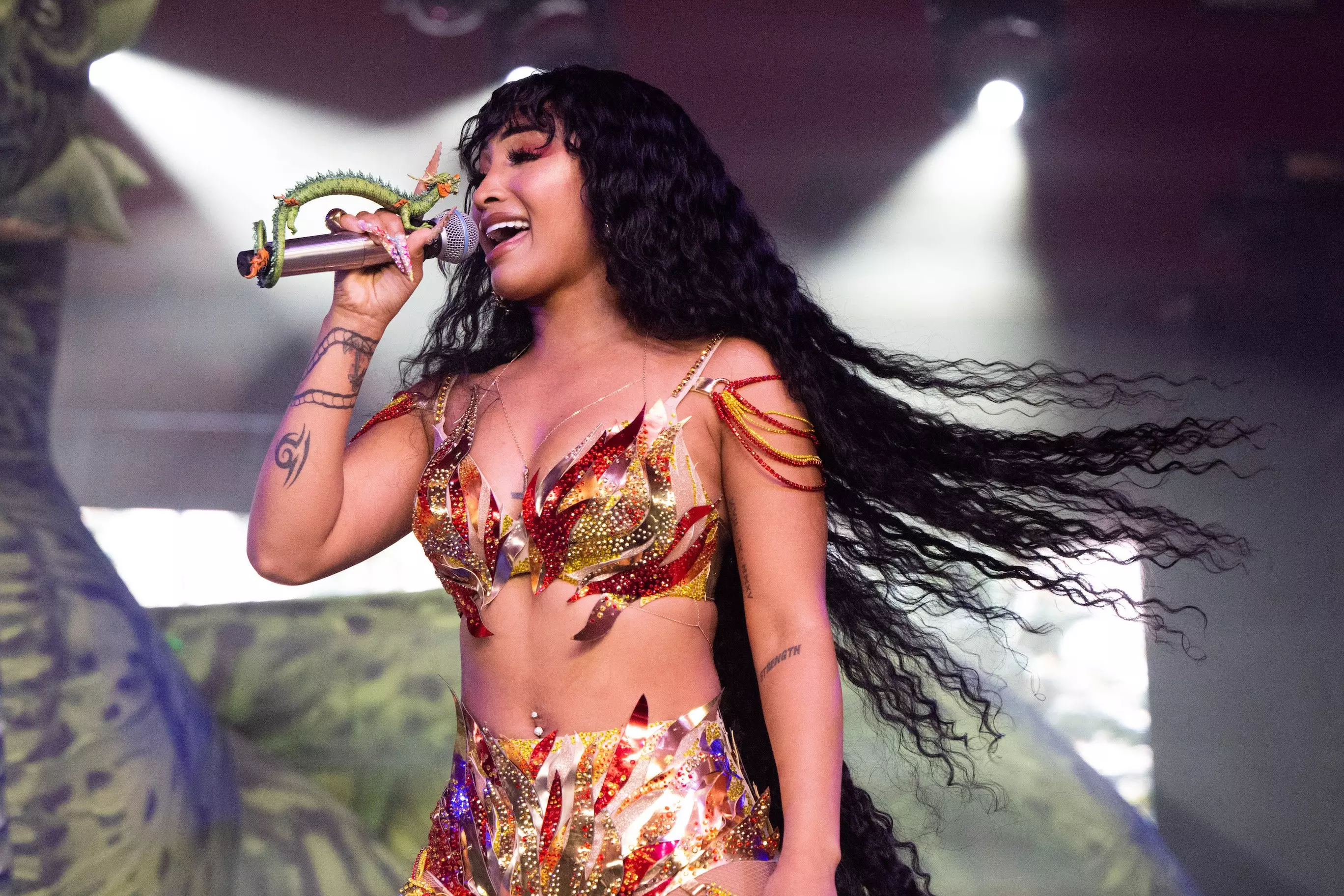
8 Can't-Miss Acts At Afro Nation Detroit 2024: Shenseea, Ayra Starr, Kizz Daniel & More

On This Day In Music: Woodstock '94 Begins In Upstate New York
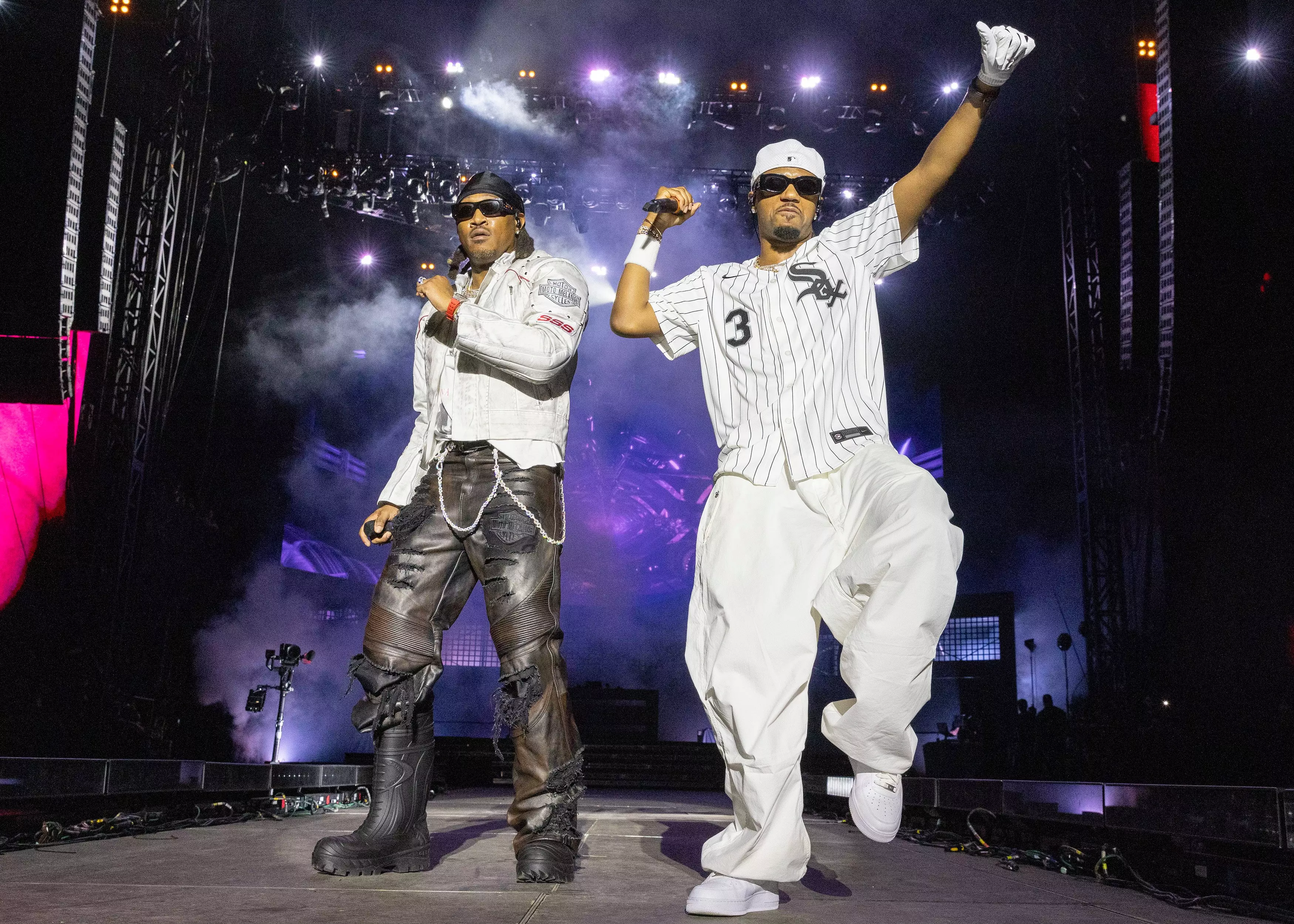
7 Stellar Sets From Lollapalooza 2024: Megan Thee Stallion, Future x Metro Boomin & More

10 Cant-Miss Sets At HARD Summer 2024: Disclosure, Boys Noize, INVT & More
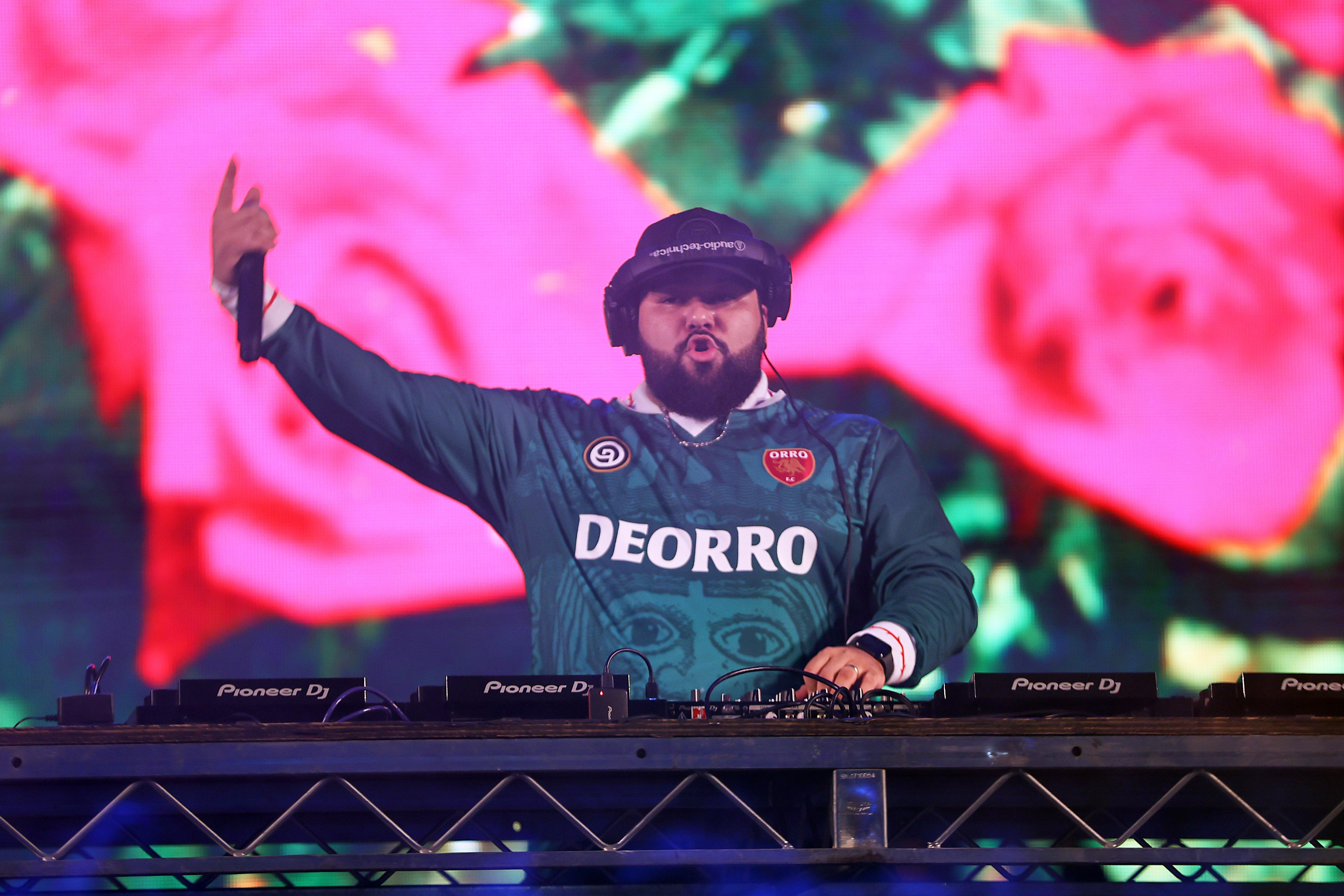
Photo: Omar Vega/Getty Images
list
8 Essential Latin Electronic Releases: Songs And Albums From Bizarrap, Arca & More
Electronic sounds can be heard throughout Latin music and will be recognized in a new Field and Category at the 2024 Latin GRAMMYs. In honor of the new Best Latin Electronic Music Performance award, read on for eight Latin electronic music essentials.
Electronic music is embedded within the diverse world of Latin music and, for the first time, will be recognized in a new Field and Category at the 2024 Latin GRAMMYs. Within that field, the award for Best Latin Electronic Music Performance was created to shine a light on DJs, producers, and artists blending proudly blending electronic music with the sounds of their cultures.
Electronic music embodies various subgenres like house music, techno, trance, electronica, and many others rooted that have been popularized by DJs and producers. Latin artists have long enriched those subgenres: Mexico's Belanova globalized the electro-pop wave, while Bomba Estéreo blended cumbia with electronica in Colombia.
The explosion of EDM in the 2010s also allowed the careers of Latinx DJs to flourish. Mexican American DJ Deorro has showcased both cultures during sets at music festivals like EDC, Coachella, Tomorrowland, and more. Arca's music pushes the boundaries of electronic music through a Venezuelan and Latin American lens. More recently, Colombian producer Víctor Cárdenas bridged the gap between EDM and reggaeton with the global hit "Pepas" by Farruko. Since then, electronic music has seeped through the work of Latin hit-makers like Tainy, Caleb Calloway, Bizarrap and Diego Raposo. "Pepas" and many of Bizarrap's music sessions crossed over onto Billboard's Hot Dance/Electronic Songs.
"That’s something that’s very big for us," Deorro tells GRAMMY.com about the new category. "How beautiful that this is happening, because it shows that what we’re doing is working, we’re breaking down doors, and we’re creating more opportunities for artists like us in the future."
In honor of the Latin Recording Academy's new Field and Category, here are eight must-hear Latin electronic music essentials.
Belanova - Cocktail (2003)
Belanova revolutionized the Latin music space with their 2003 debut album Cocktail, an atmospheric LP that seamlessly blends Latin pop with electronic music. In the dreamy deep house of "Tu Ojos," singer Denisse Guerrero sang about getting lost in her lover's eyes. The trippy techno of "Barco De Papel" was reminiscent of the music from Madonna's Ray of Light album. Electronic music on the ambient level wasn’t common in Latin music until Belenova changed the game in Mexico, which later reverberated into the rest of Latin America and the U.S.
The trio — which includes guitarist Ricardo Arreol and keyboardist Edgar Huerta — later delved into electro-pop on 2007's Fantasía Pop, which won a Latin GRAMMY for Best Pop Album by a Group or Duo the following year.
Arca - Kick I-II (2020)
Venezuelan producer/artist Arca is a pioneer in the Latin electronic music space. Arca first began producing her experimental electronica in Spanish with her 2017 self-titled album.
Arca then masterfully mixed the diverse sounds of Latin America and beyond with EDM throughout her Kick album series.
For Kick I, she combined Venezuelan gaita music and reggaeton with a cyberpunk edge in "KLK" featuring Spanish pop star Rosalía. Arca then blended electronica with neo-perreo on Kick II's "Prada" and "Rakata." Both albums garnered Arca GRAMMY and Latin GRAMMY nominations.
As a trans and non-binary artist, she is also breaking boundaries for the LGBTQ+ community in the genre. Arca is just not creating more space for queer artists in Latin music, but also in EDM at large by embracing the totality of herself in song.
Bomba Estéreo - Deja (2021)
Bomba Estéreo, which is comprised of core members Simón Mejía and Liliana "Li" Saumet, has masterfully melded the music of Colombia’s Caribbean coast with electronic music. Since breaking out in 2008 with their sophomore album, the group has often reimagined the African and Indigenous rhythms of their country like cumbia through dance music. Bomba Estéreo’s folkloric approach to EDM has led to collaborations with Bad Bunny, Tainy, and Sofi Tukker.
In 2021, Bomba Estéreo released its most ambitious album Deja, which garnered a GRAMMY and Latin GRAMMY nominations. The title track put a funky spin on the band's signature electro-tropical sound. House music collided with the Afro-Colombian rhythms of champeta in "Conexión Total" featuring Nigerian singer Yemi Alade. Their album that was based on the four classical elements was a breath of fresh air in the Latin music scene.
Bizarrap - "BZRP Music Sessions #52" (2022)
Argentine producer Bizarrap launched the BZRP Music Sessions on YouTube in 2018, first remaining behind the console for freestyle rapping sessions with local acts. The sessions quickly went viral, and have featured increasingly larger names in music.
Over the past five years, Bizarrap worked elements of electronic music into his hip-hop productions. In 2022, he fully delved into EDM with his global hit "BZRP Music Sessions #52" featuring Spanish singer Quevedo. The traptronica banger peaked at No. 4 on Billboard's Hot Dance/Electronic Songs and earned Bizarrap his first Latin GRAMMY Award.
Since then, his music sessions have become a global event. Bizarrap later infused electro-pop with a trap breakdown in "BZRP Music Sessions #53" with Shakira, which garnered him two more Latin GRAMMY awards.
Javiera Mena - Nocturna (2022)
Javiera Mena first debuted as an indie act in 2006 with Esquemas Juveniles. With that freedom as a producer and artist, the Chilean star pushed Latin music into the electronic space with her 2010 album Mena.
She fully immersed herself into Latin electronica on her latest album, 2022's Nocturna — an album filled with nighttime club bangers that invite everyone to dance with her. Mena also proudly sings about being part of the LGBTQ+ community in the alluring "La Isla de Lesbos" and the fierce house music of "Diva" featuring Chico Blanco. Considering the influence of queer artists in the formation of electronic genres like house, it’s refreshing to see an artist like Mena remind people of those roots and bring that into Latin music.
Deorro - Orro (2022)
Mexican American producer Deorro has established himself as one of the world's top DJs, and is known for mixing both of his cultures into his music festival sets. Even before the música mexicana explosion last year, he was one of the first mainstream EDM acts to bring the genre to music festivals around the world through his songs and remixes.
With his debut album, 2022's Orro, Deorro fully bridged música mexicana with house music. He collaborated with Latin acts like Mexico's Los Tucanes De Tijuana and Maffio in "Yo Las Pongo," which blended the band's norteño sound with EDM. Deorro also explored cumbia with deep house in the sweeping "Dime" featuring Los Ángeles Azules and Lauri Garcia. In his recent sets, he is spinning a fiery remix of "Ella Baila Sola" by Eslabon Armado and Peso Pluma
Sinego - Alterego (2023)
Sinego first broke through in 2019 thanks to his house bolero sound like in "Verte Triste," which put a refreshing spin on an age-old Cuban genre. With traditional genres within the Latin diaspora often falling to the wayside as the years go on, he is reintroducing them to new audiences through EDM reimaginings.
For his debut album, 2023's Alterego, the Colombian producer pushed his electronic music to another level. Sinego traveled to different Latin American countries and Spain to record with local musicians, reimagining genres like cumbia, tango, and mambo through Sinego's EDM lens. With the sultry "Mala," he blended Venezuela's variation of calypso with house music. He also gave Brazilian samba a house music makeover in "Boa Noite" featuring Tonina.
Diego Raposo - Yo No Era Así Pero De Ahora En Adelante Sí (2023)
Dominican producer Diego Raposo has helped Latin acts like Danny Ocean, Blue Rojo, and Letón Pé embrace elements of electronic music. In 2018, Raposo released his debut album Caribe Express, which demonstrated his knack for mixing the sounds of the Caribbean with EDM.
Raposo took that inventive mix into overdrive with last year's Yo No Era Así Pero De Ahora En Adelante Sí. The otherworldly "Si Supieras" featuring Okeiflou blended house music with reggaeton, while "Al Contrario" with Akrilla aggressively mixes drum 'n 'bass with dembow. Rapaso also channels Dance Dance Revolution-esque electronica in the spellbinding "Quédate" with Kablito.
7 Latin DJs To Watch In 2023: Gordo, Arca, The Martinez Brothers & More
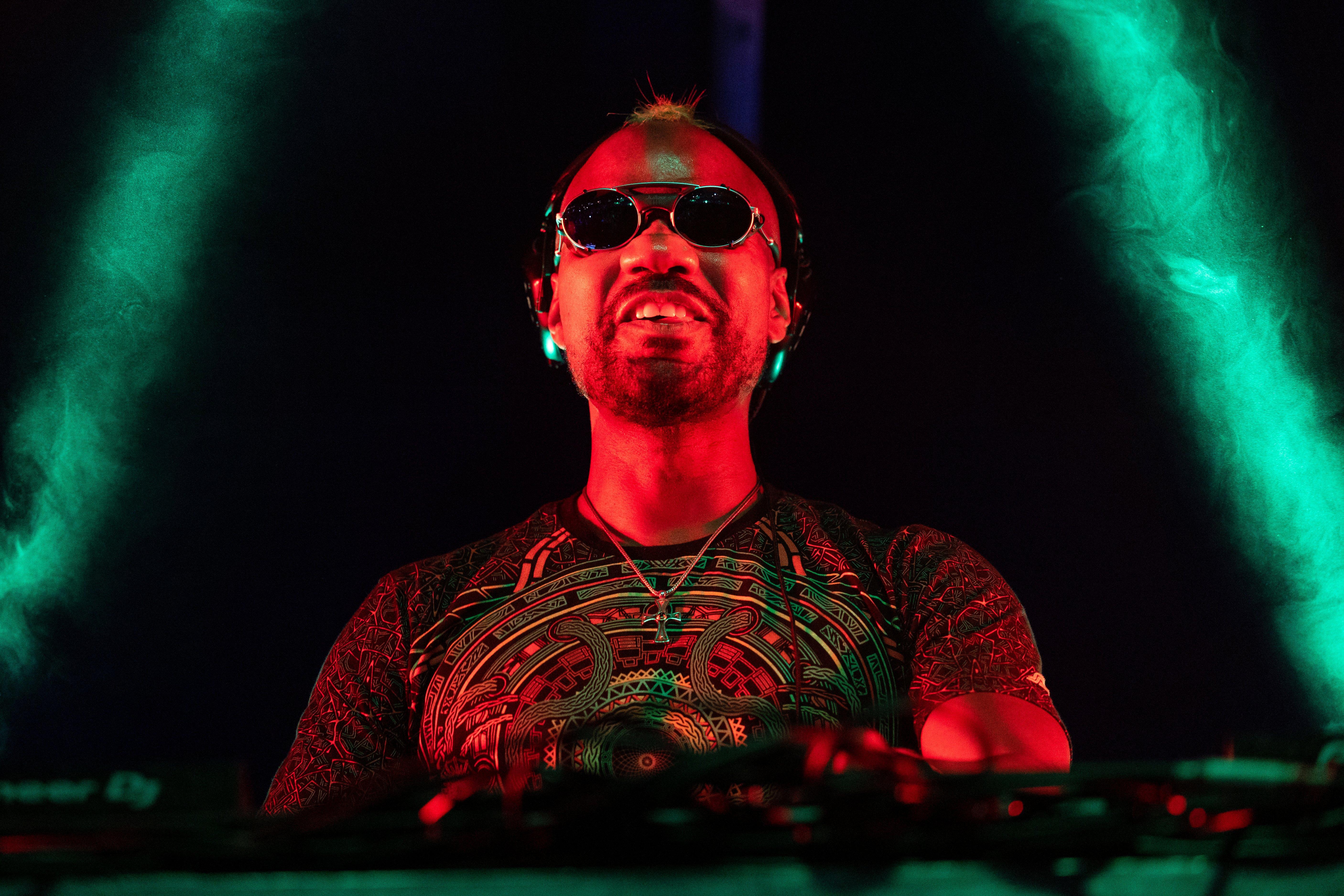
Photo: Matt Jelonek/WireImage
interview
Dance Legend Curtis Jones On Cajmere, Green Velvet & 30 Years Of Cajual Records
As Green Velvet and Cajmere, DJ/producer Curtis Jones celebrates everything from Chicago to acid house. With a new party and revived record label, Jones says he wants to "shine a light on those who sacrificed so much to keep house music alive."
Curtis Jones is a dance music legend, whose multiple monikers only begin to demonstrate his deep and varied influence in the genre.
Jones has been active as a producer and DJ for decades, and is among a cadre of dance music acts forging a connection between the genre's origins and its modern iterations. Crucially, he joined Chicago house legends Honey Dijon and Terry Hunter on Beyoncé's house-infused RENAISSANCE, providing a sample for "Cozy." He’s also produced tracks with house favorites Chris Lake and Oliver Heldens, and DJed with Dom Dolla and John Summit.
Jones contributed to the aforementioned collaborations, young and old, as Green Velvet. He’s been releasing dance hits like "Flash" and "Answering Machine" under that name since the mid- '90s. He is also currently a staple of the live circuit, his signature green mohawk vibing in clubs and festivals around the globe — including at his own La La Land parties in Los Angeles, Denver, Orlando, and elsewhere.
Green Velvet is appropriately braggadocious, even releasing the popular "Bigger Than Prince" in 2013. But by the time Jones had released the heavy-grooving tech house track, his artistry had been percolating for decades as Cajmere.
Where Green Velvet releases lean into acid house and Detroit techno, Cajmere is all about the traditional house sound of Jones’ hometown of Chicago. When Jones first debuted Cajmere in 1991, Chicago’s now-historic reputation for house music was still developing. Decades after the original release, Cajmere tracks like "Percolator,” have sustained the Windy City sound via remixes by prominent house artists like Will Clarke, Jamie Jones, and Claude VonStroke.
"I love doing music under both of my aliases, so it’s great when fans discover the truth,” Jones tells GRAMMY.com over email. Often, Jones performs as Cajmere to open his La La Land parties, and closes as Green Velvet.
But beyond a few scattered performances and new tracks, Cajmere has remained dormant while Green Velvet became a worldwide headliner, topping bills in Mexico City, Toronto, Bogotá and other international dance destinations. He’s only shared two original releases as Cajmere since 2016: "Baby Talk,” and "Love Foundation,” a co-production with fellow veteran Chicago producer/DJ Gene Farris.
This year, Jones is reviving Cajmere to headliner status with his new live event series, Legends. First held in March in Miami, Jones' Legends aims to highlight other dance music legends, from Detroit techno pioneers Stacey Pullen and Carl Craig, to Chicago house maven Marshall Jefferson.
"My intention is to shine a light on those who sacrificed so much to keep house music alive," Jones writes. "The sad reality is that most of the legendary artists aren’t celebrated or compensated as well as they should be."
Given that dance music came into the popular music zeitgeist relatively recently, the originators of the genre — like the artists Jones booked for his Legends party — are still in their prime. Giving them space to perform allows them to apply the same innovation they had in the early '90s in 2024.
Jones says the Miami Legends launch was an amazing success."Seeing the passion everyone, young and old, displayed was so inspiring."
Curtis Jones, center, DJs at the Miami Legends party ┃Courtesy of the artist
The first Legends party also served as a celebration of Cajual Records, the label Jones launched in 1992 as a home for his Cajmere music. Over the past three decades, Cajual has also released tracks from dance music veterans such as Riva Starr, as well as contemporary tastemakers like Sonny Fodera and DJ E-Clyps.
Furthermore, Jones’ partnership with revered singers such as Russoul and Dajae (the latter of whom still performs with him to this day) on Cajual releases like "Say U Will” and "Waterfall” helped to define the vocal-house style.
Like the Cajmere project, Cajual Records has been moving slower in recent years. The label has only shared four releases since 2018. True to form, though, Jones started another label; Relief Records, the home of Green Velvet's music, shared 10 releases in 2023 alone.
Jones says he's been particularly prolific as Green Velvet because "the genres of tech house and techno have allowed me the creative freedom I require as an artist."
Now Jones is making "loads of music” as Cajmere again and recently signed a new distribution deal for Cajual Records. The true sound of Chicago is resonating with audiences in 2024, Jones says, adding "it's nice that house is making a comeback."
Jones remembers when house music was especially unpopular. He used to call radio stations in the '80s to play tracks like Jamie Principle's underground classic "Waiting On My Angel,” only to be told they didn’t play house music whatsoever. In 2024, house music records like FISHER’s "Losing It” were certified gold, and received nominations for Best Dance Recording at the 66th GRAMMY Awards. Jones is embracing this popularity with open arms.
"The new audience it’s attracting is excited to hear unique underground-style house records now. This is perfect for my Cajmere sets,” Jones says. "I never saw Green Velvet being more popular than Cajmere, and both sounds being as popular as they are even today.”
While Jones is finding success in his own artistic endeavors, he points to a general lack of appreciation for Black dance artists in festival bookings. Looking at the run-of-show for ARC Festival, a festival in Chicago dedicated to house and techno music, legendary artists play some of the earliest slots.
For the 2023 edition, Carl Craig played at 3 p.m on Saturday while the young, white John Summit, closed the festival the same night. In 2021, the acid house inventor, Chicago’s DJ Pierre, played the opening set at 2 p.m. on Saturday, while FISHER, another younger white artist, was the headliner.
In 2020, Marshall Jefferson penned an op-ed in Mixmag about the losing battle he is fighting as a Black DJ from the '90s. He mentions that younger white artists often receive upwards of $250,000 for one gig, whereas he receives around $2,000, despite the fact that he still DJs to packed crowds 30 years after he started.
Jones is doing his part to even the playing field with Legends, and according to him, things are going well after the first edition. "Seeing how much respect the fans have for the Legends was so special,” Jones says. "Hopefully they become trendy again.”
The story of Curtis Jones is already one of legend, but it is far from over. "I feel it’s my duty to continue to make creative and innovative tracks as well as musical events. I love shining the light on new upcoming and emerging artists as well as giving the originators their proper dues,” Jones says.
